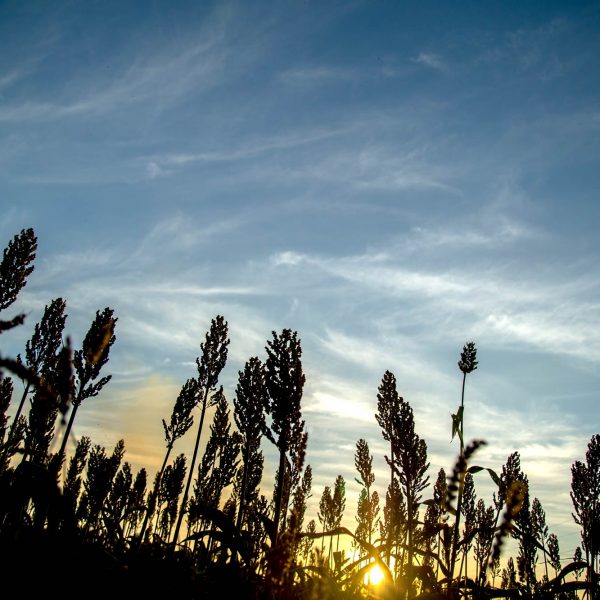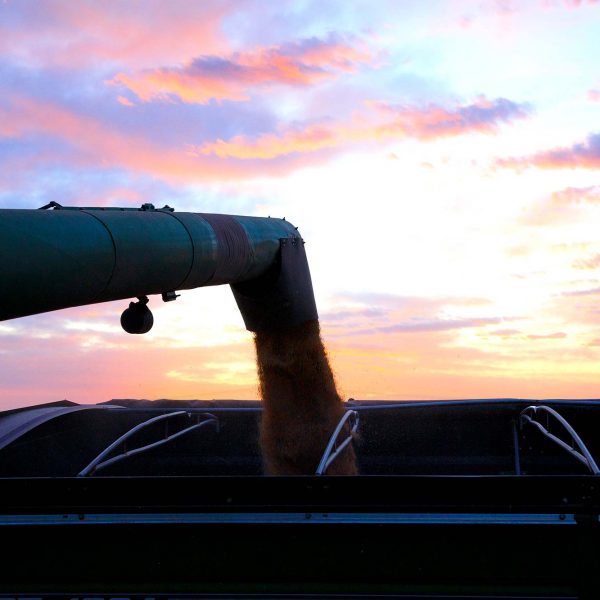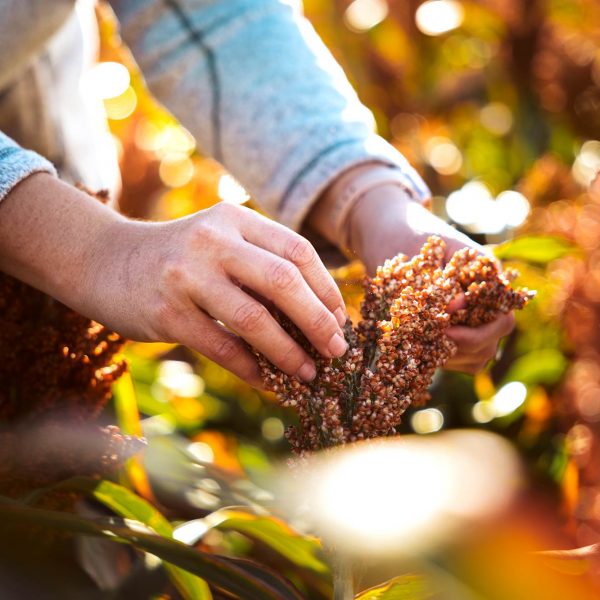Sorghum and Lodging
By Sorghum Checkoff Agronomy Director Brent Bean, Ph.D.
Lodging can occur with any plant, but unfortunately occurs in sorghum more than any of us would want. There are two types of lodging – root lodging and stalk lodging.
Root lodging
Root lodging is when the stalk is intact but the plants lodge from the roots. The roots either break off or are pulled loose from the soil causing the plant to fall over. When this occurs early in the life of the plant the sorghum will usually recover, although a “bend” in the stalk will remain, which is called “goosenecking.”
Root lodging can occur on small plants two to three weeks after emergence, to any time prior to harvest. When it occurs early, the final yield is generally not affected since the plants quickly begin to grow upright.Root lodging predominantly occurs when soil conditions are wet and very high winds occur. When sorghum is being irrigated, growers should allow the soil to dry between irrigations the first 35 days after planting to encourage the roots to develop deeper into the soil.
Insect feeding on roots can also greatly increase lodging, so seed treatments should be considered.
Stalk Lodging
The primary limiting factor in crop production across the United States and the world is water availability. Sorghum is well known for its tolerance to drought; however, one of the consequences of growing sorghum in a drought-prone region is stalk lodging due to water stresses during grain fill toward the end of the season.
There are many factors that are associated with stalk lodging including stalk characteristics, stalk rots,Sorghum Stalks nutrient balance, plant height, grain yield and leaf senescence. Leaf senescence occurs when sorghum plants are water stressed late in the season. This leads to a decrease in photosynthesis resulting in the loss of carbon production, which is needed by the developing grain. The sorghum plant reacts to this lack of carbon production by robbing carbon from the stalk and leaves to support carbon accumulation in the grain. This potentially leads to lodging as a result of stalk collapse or breakage. Leaf senescence is reduced or delayed in hybrids with the stay-green trait. Choosing a hybrid with good stay-green characteristics is one-way growers can reduce the occurrence of lodging. The stay-green characteristic allows for greener leaves and thus a greater photosynthesis rate when drought stress occurs during grain fill. This in turn reduces the need for carbon to be transferred from the sorghum stalk to the grain resulting in stronger stalks and improved standability.
Besides choosing a stay-green hybrid, other management inputs growers should consider to reduce the potential for lodging are listed below:
Charcoal and Fusarium stalk rot: Both stalk rots are associated with lodging. Water-stressed sorghum plants are more susceptible to these pathogens. Consider hybrids with good charcoal and Fusarium stalk rot resistance.
Anthracnose disease: In those regions where anthracnose is a problem, consider planting a resistant hybrid. Alternatively, consider making a timely fungicide application. Anthracnose destroys the leaf tissue reducing photosynthesis which leads to a loss of carbon in the stalk.
Plant population: High plant populations lead to smaller diameter stalks which are associated with a greater incidence of lodging. The seeding rate should match the anticipated yield potential of the environment.
Row spacing: Although this may seem surprising to some, wider rows actually result in larger stalk diameter than narrow rows when the plant population per acre remains the same.
Nitrogen levels: Excess nitrogen in the soil is correlated with increased lodging. Apply only the amount of nitrogen needed for meeting yield potential of the environment.
Potassium levels: Potassium, which promotes sorghum standability, is needed for lignin and cellulose development in plants. Adequate soil potassium is essential.
Irrigation: It is important not to terminate irrigation too soon for those growers who are irrigating. Late-season irrigation, even after the grain has reached the hard dough stage, is important to maintain stalk integrity.




